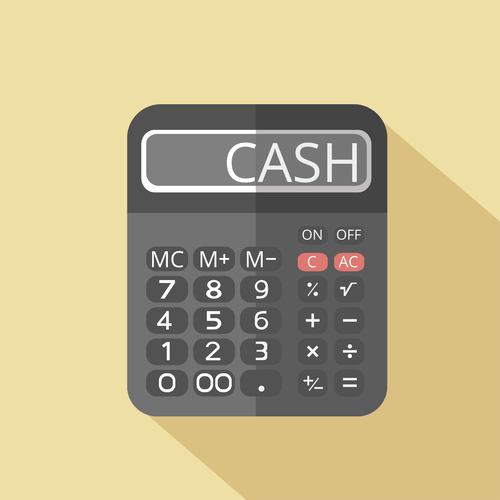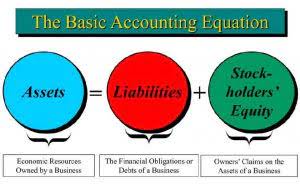Lease accounting: IFRS® Standards vs US GAAP

The legacy https://www.bookstime.com/ standards included ASC 840, IAS 17, and various GASB standards, mainly GASB 13 and GASB 62. Before the announcement of new lease accounting standard requirements, most companies did not find it essential to pay close attention to operating leases within the financial reporting process. This was because lessees with operating leases would only recognize an expense over the lease term with limited balance sheet impact. This area of accounting has undergone many changes after recent pronouncements.
Sale-leaseback accounting under ASC 842
One of the more common scenarios of a lease agreement is an entity renting their owned property to another entity for a monthly cash payment. For example, if an organization owns a building and leases the right to use the building or space within the building, the owner of the building is the lessor, also commonly referred to as the landlord. It’s important to understand the ins and outs of lease classification and stay up to date on the current lease accounting standards.
Lease accounting software: Why is there a sudden need for it?
The lease liability is the present value of the future lease payments and is recorded alongside the right-of-use asset for operating and finance leases. Under IFRS 16 and GASB 87, however, a lease liability is considered long-term debt. It’s important to know how to properly calculate the lease liability amortization schedule whether you plan to use Excel or lease accounting software.

Straight-line rent expense
Incentives can be either the payments made by the lessor to the lessee, or the reimbursement or assumption of costs of a lessee by a lessor. Often, a lessor may offer to assume the payments from a lessee’s pre-existing lease with a third party. At commencement, lease incentives are treated as a reduction of the ROU asset when they are paid or payable. A sale-leaseback transaction is an asset transfer that occurs between an existing lessor, the seller; and a lessee, the buyer. When a sale-leaseback transaction occurs between a seller-lessee and a buyer-lessor, accounting for this type of transaction becomes more difficult.
Impact of the New Lease Accounting Standards

You’ve worked hard building your business and you want to ensure that the next generation is prepared to carry on what you started. We use our decades’ worth of experience to help clients avoid common pitfalls, to make sure every action has been carefully considered, and to understand issues pertaining to the succession. We do all of this while keeping in mind the very personal nature lease accounting of this transaction. With Prophix One, Health Connect America decreased month-end reporting process time from 4.5 days to 2 days and their Operating Contribution actuals to budget variance improved from 16% to 6%. Spacesaver’s financials used to be a mystery three days into their four-day close process. Now, their finance team can have an informed discussion on their data on day two.

Presentation of ROU assets and lease liabilities
Paragraph B26 includes examples of decision-making rights that, depending on the circumstances, grant the right to change how and for what purpose the asset is used. Rights limited to operating or maintaining the asset do not grant the right to change how and for what purpose it is used (paragraph B27). An entity shall assess whether a contract contains a lease for each potential separate lease component. Except as specified in paragraph B7, this Standard permits a lessee to apply paragraph 6 to account for leases for which the underlying asset is of low value.
- The lease term begins at the commencement date and includes any rent-free periods provided to the lessee by the lessor.
- Payments that are initially structured as variable lease payments linked to the use of the underlying asset but for which the variability will be resolved at some point after the commencement date so that the payments become fixed for the remainder of the lease term.
- Consequently, the Committee decided not to add the matter to its standard-setting agenda.
- Operating leases, however, spread out expenses evenly to match the use of the leased asset.
In December 2004 the Board issued IFRIC 4 Determining whether an Arrangement contains a Lease. All entities that follow GAAP and have leases longer than 12 months in length must comply with the rules stated in the ASC 842 lease accounting standard. Under ASC 842, all leases 12 months and longer must be identified on the balance sheet. For organizations that follow GAAP, all leases 12 months and longer need to adhere to the accounting standards in ASC 842.

The supplier’s right or obligation to substitute the asset for repairs and maintenance, if the asset is not operating properly or if a technical upgrade becomes available does not preclude the customer from having the right to use an identified asset. If a lessee subleases an asset, or expects to sublease an asset, the head lease does not qualify as a lease of a low-value asset. The underlying asset is not highly dependent on, or highly interrelated with, other assets. The period over which an asset is expected to be available for use by an entity; or the number of production or similar units expected to be obtained from an asset by an entity. That portion of the residual value of the underlying asset, the realisation of which by a lessor is not assured or is guaranteed solely by a party related to the lessor. A lease that does not transfer substantially all the risks and rewards incidental to ownership of an underlying asset.
The concept of straight-line rent expense requires lessees to charge their total lease liability to expense on an even, periodic basis over the lifetime of the contract. Similar to straight-line depreciation, this method is required to evenly recognize a fixed asset over its useful life. Similarly, straight-line rent expense is calculated by aggregating all rent payments and dividing them by the full contract term. The right-of-use asset, or ROU asset, is the value of the lessee’s right to control the use of a specific asset over a specific period. Under ASC 842, the ROU asset is calculated as the lease liability amount and any lease prepayments plus any direct costs, less any lease incentives. ROU assets and lease liabilities are presented separately on the balance sheet.